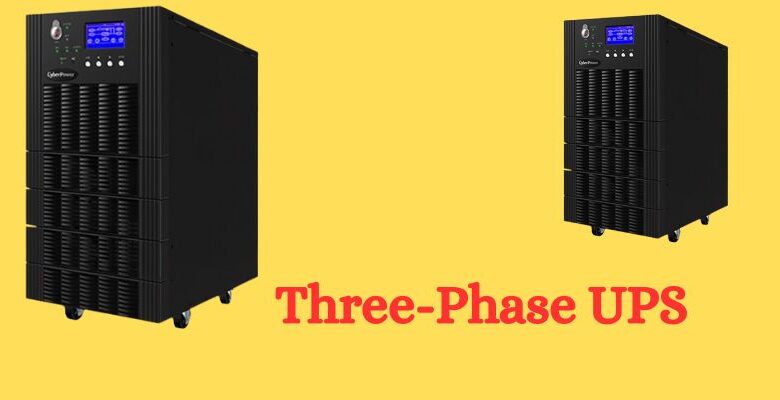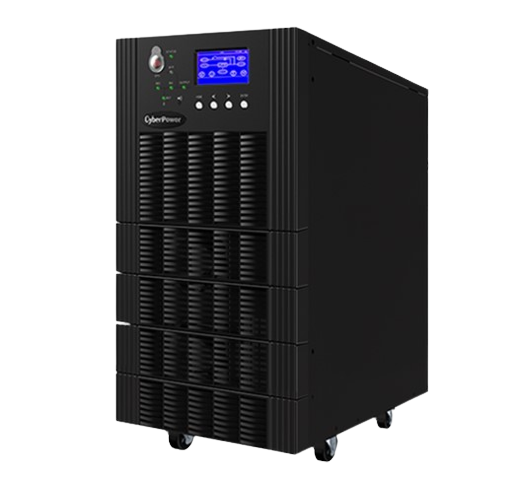Powering the Future: Advanced Three-Phase UPS Systems

The world is adapting to eco-friendly ways and there is increased demand for this renewable energy. When moving towards renewables, we need backup power systems that can give continuity of electricity supply.
This is where grade three phase UPS can be used. These UPS systems are purposely developed to guarantee quality backup power for vital functions like data centers, hospitals, and factories. These features include modularity, scalability, and flexibility which make the devices suitable for many applications.
So, in today’s article, I’m going to talk about how what recent improvements has been made in a three-phase UPS. First, we will discuss the advantages of this system. We will also consider several renowned three-phase UPS options and their distinct characteristics.
If you want to find out about power systems in the future, then read this article till the end.
Role of UPS in Modern Business
As companies rely increasingly on technology to carry out their operations, any interruption in power supply can result in significant financial losses and damage to reputation.
Advanced three-phase UPS systems have emerged as an essential backup for businesses that want to keep their important infrastructure from unexpected power disruptions.

Modern business organizations will be incomplete without uninterruptible power supplies (UPS). They supply power in a consistent manner, which makes sure that necessary equipment is protected against spikes, surges or power outages.
Therefore, the fact that power grids are unreliable does not mean that businesses will grind to a halt.
Importance of UPS
UPS is necessary for a variety of businesses, including:
- Data Centers
- Server Rooms
- Manufacturing Facilities
- Retail Stores
- Hospitals
- Financial Institutions
Even a short-term power blackout in such environments is bound to cause great harm. These result in huge fines for data loss, equipment damage, and downtime.
How UPS Works
A UPS typically consists of three main components:
- Battery
- Inverter
- Charger
Equipped with a battery that stores energy that is available to supply equipment usage in case of emergency. The inverter converts the direct current (DC) power generated by the battery into the alternating current (AC) power commonly used by many of today’s electronic gadgets. This ensures that the battery is fully charged and, therefore, always able to serve its purpose in case of emergencies.
Types of UPS
There are three main types of UPS:
- Standby UPS
- Online UPS
- Line-interactive UPS
The less complex and affordable type of UPS is known as standby UPS. Though it shields from overload situations, it gives dirty voltage that is not controlled. Therefore, it implies that they cannot be used effectively in delicate equipment.
The highest protection is obtained with online ups. They suppress spikes, transients, and noise from the power grid and deliver clean and steady power to vital equipment. This also means that they are good for use with such items as servers and medical equipment.
The line-interactive UPS is a step up from the standby UPS, but not quite like the online UPS. Some spikes and transients are filtered out by them while delivering the regulated power to essential devices. Nevertheless, they cannot offer full protection like internet UPSs.
Selecting the Right UPS for Your Needs
Anyone who uses their computer either for work or leisure should have a UPS. A UPS will shield your machinery from damage resulting from power surges, spikes, or even outages. Additionally, it will give you ample time to file off your work safely before shutting down your computer in case of sudden power failure.

Here are some factors to consider when selecting a UPS for your needs:
Power Capacity
The critical thing here is the power rating of the UPS. Power capacity is expressed as watts or voltamps. It should have a large enough power capacity, and you will have to make sure that the sum total of all the device’s power consumption is less than that of your UPS.
To get total power needs, simply sum up all device-rated watts that you are planning to connect to the UPS.
Runtime
The runtime of a UPS measures how long it can supply for your devices when there is a power failure. Runtime is measured in minutes. The runtime depends upon the kinds of devices that require protection and for how long you want them usable after power interruption.
You might only take a couple of minutes to record your information in order to turn off the computer safely if it is a protection of a computer. Nevertheless, depending on what you are guarding, that is, server or other essential object, it could take hours for the run time.
Features
Some UPSs have additional features that may be important to you, such as:
- Software Management: Gives you an opportunity to view and control your UPS from a remote location.
- AVR (Automatic Voltage Regulation): Prevents power surges from damaging your devices.
- Noise Reduction: This ensures that the noise level of the UPS is reduced.
- Remote Access: Enables remote supervision of UPSs across the globe.
Price
Prices of UPSs are relatively low, with the cheapest model fetching approximately $50 and an upper limit exceeding $1,000+. Prices for UPS are determined by power capacity, runtime, type of UPS, and features, among others.
These guidelines will enable you to choose the correct uninterruptible power supply that meets your specific requirements aimed at safeguarding your electronic gadgets from damage.
Installation and Maintenance Best Practices
Proper installation and maintenance can go a long way in enhancing the performance and service life of your UPS. Here are some best practices to follow:
Installation
Installing your UPS in your home or office also requires a lot of work and care. If you don’t do that, then there might be some damage you will face. This will not be good and lead to the chances of spark, or current blockage. So, here are some important things while installing your UPS:
- Place the UPS in a cool, dry, and ventilated place far from direct sunlight, heat sources, and excessive humidity.
- Check and ensure your UPS systems are grounded well enough to avoid any form of electrical hazard.
- Have enough area surrounding the UPS for effective circulation of air and maintenance work.
- Only link up necessary devices to the UPS so that it does not have a load greater than its capability.
- Ensure that your power source is strong and secure in order not to overload this unit.
- Always make sure that the appropriate cables are used on the output receptacles of UPS and that no loose attachments exist on any of the protected devices.
Maintenance
The maintenance of the UPS is very essential if you want to take advantage from it in the long term. So, here are some tips that will help you with that:
- Carry out frequent battery checks to verify it is in fine condition and change if it fails.
- Always make sure that the UPS is cleaned out to avoid overheating and have adequate airflow.
- Ensure that you regularly check and properly clean the UPS air vents.
- Make sure to review, update, and download the latest firmware from the manufacturer for enhanced performance and bug fixes and solutions.
- Have a competent person inspect your system at least twice per year so that problems can be nipped in the bud.
Conclusion
To sum up, advanced three-phase UPS systems are crucial for eco-friendly and reliable power solutions, particularly in data centers, hospitals, and factories. They offer modularity, scalability, and flexibility, making them ideal for building smarter facilities.
UPS systems are essential in modern businesses, as they rely on technology and are crucial for data centers, manufacturing facilities, and financial institutions. The paper discusses various types of UPS, factors to consider when selecting one, and best practices for installation and maintenance.





